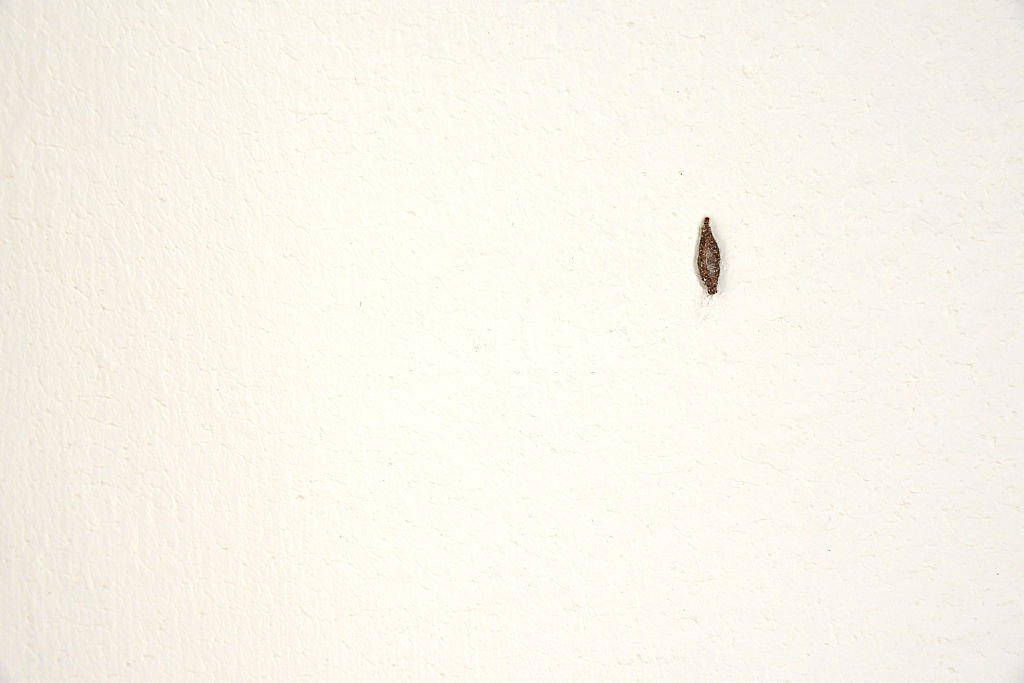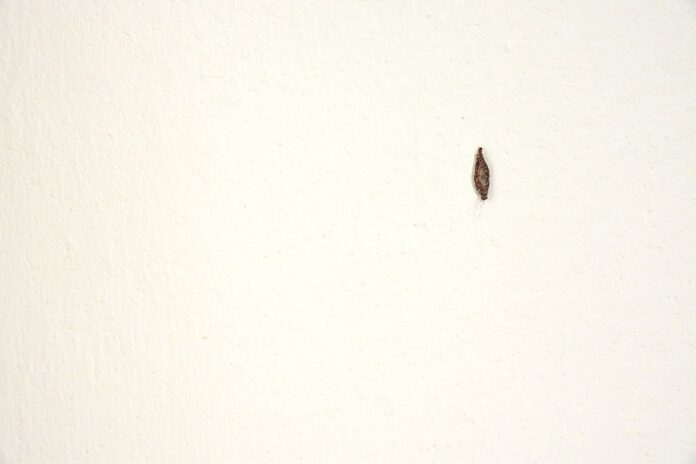Introduction
Plaster bagworms are a common household pest that can cause frustration and annoyance for homeowners. These small insects are often found in homes and can be difficult to get rid of. In this article, we will explore the world of plaster bagworms, including what they are, why they may be in your house, and the importance of getting rid of them.
Plaster bagworms, also known as household casebearers, are small moths that belong to the family Psychidae. They are named for the protective cases they create out of silk and debris, which resemble small bags or cocoons. These cases serve as a shelter for the larvae as they grow and develop. While the adult moths are harmless and do not cause any damage, it is the larvae that can be problematic.
The presence of plaster bagworms in your home can be a cause for concern. Not only can they damage fabrics and other materials, but they can also be a sign of poor hygiene and cleanliness. It is important to take action to get rid of these pests and prevent future infestations.

Understanding the Plaster Bagworms: What are they and why are they in my house?
Plaster bagworms are small insects that measure about 1/2 inch in length. They have a slender body and long antennae. The larvae are covered in a protective case made of silk and debris, which they carry around with them as they move. These cases are often camouflaged to blend in with their surroundings, making them difficult to spot.
There are several reasons why plaster bagworms may be in your house. One common reason is poor hygiene and cleanliness. These pests are attracted to areas with food debris, dust, and other organic matter. If your home is not regularly cleaned and maintained, it can provide an ideal environment for plaster bagworms to thrive.
Another reason why plaster bagworms may be in your house is through infested items that you bring into your home. These pests can hitch a ride on clothing, furniture, or other items that have been infested. Once inside your home, they can quickly spread and infest other areas.
Identifying the Signs of Infestation: How to spot the presence of plaster bagworms in your home.
It is important to be able to identify the signs of a plaster bagworm infestation in your home. By doing so, you can take action to get rid of them before they cause further damage. There are both physical and behavioral signs that can indicate the presence of plaster bagworms.
Physical signs of infestation include the presence of small, silk-like cases attached to walls, ceilings, or other surfaces. These cases are often camouflaged and can be difficult to spot. They may blend in with the surrounding area, making them easy to overlook. Additionally, you may notice small holes or damage to fabrics, carpets, or other materials, which can be caused by the larvae feeding.
Behavioral signs of infestation include the presence of adult moths flying around your home. These moths are attracted to light and may be seen fluttering around lamps or windows. You may also notice larvae crawling on walls or other surfaces, as they search for food and new areas to infest.
Prevention is Key: Tips for keeping plaster bagworms out of your house.
Prevention is key when it comes to keeping plaster bagworms out of your house. By taking proactive measures, you can reduce the likelihood of an infestation and keep your home pest-free. Here are some tips for preventing plaster bagworms from entering your home:
1. Seal cracks and crevices: Plaster bagworms can enter your home through small cracks and crevices. Inspect your home for any openings and seal them with caulk or weatherstripping. This will help prevent these pests from gaining access to your home.
2. Keep your home clean and organized: Plaster bagworms are attracted to areas with food debris, dust, and other organic matter. Keep your home clean and free of clutter to reduce their food sources. Regularly vacuum and dust to remove any potential food sources for these pests.
3. Reduce humidity levels: Plaster bagworms thrive in humid environments. Use dehumidifiers or fans to reduce humidity levels in your home. This will make it less attractive for these pests and help prevent infestations.
Natural Remedies: How to get rid of plaster bagworms using non-toxic methods.
If you prefer to use non-toxic methods to get rid of plaster bagworms, there are several natural remedies that you can try. These methods are safe for both humans and pets, and can be effective in eliminating these pests. Here are some natural remedies for getting rid of plaster bagworms:
1. Vacuuming: Regularly vacuuming your home can help remove plaster bagworm larvae and their cases. Pay special attention to areas where you have noticed signs of infestation, such as walls, ceilings, and fabrics. Empty the vacuum bag or canister outside to prevent reinfestation.
2. Sticky traps: Place sticky traps near areas where you have noticed plaster bagworm activity. These traps will attract and capture the adult moths, preventing them from laying eggs and starting a new infestation. Replace the traps regularly to ensure effectiveness.
3. Diatomaceous earth: Diatomaceous earth is a natural powder made from the fossilized remains of diatoms, a type of algae. It is safe for humans and pets but can be deadly to insects. Sprinkle diatomaceous earth in areas where you have noticed plaster bagworm activity, such as cracks, crevices, and along baseboards. The powder will stick to the larvae and cause them to dehydrate and die.
Chemical Solutions: When natural remedies aren’t enough, what products can be used to eliminate plaster bagworms?
If natural remedies are not effective in eliminating plaster bagworms, you may need to turn to chemical solutions. There are several insecticides and pesticides available that can help get rid of these pests. However, it is important to use these products safely and according to the manufacturer’s instructions. Here are some chemical solutions for eliminating plaster bagworms:
1. Insecticides: There are several insecticides available that are specifically formulated to target plaster bagworms. These products can be sprayed directly on the larvae and their cases, killing them on contact. It is important to choose an insecticide that is safe for indoor use and follow the instructions carefully.
2. Pesticides: Pesticides can also be effective in eliminating plaster bagworms. These products are typically applied as a dust or spray and can provide long-lasting protection against these pests. It is important to choose a pesticide that is labeled for use against plaster bagworms and follow the instructions carefully.
Cleaning and Maintenance: How to keep your home clean and organized to prevent future infestations.
Keeping your home clean and organized is essential for preventing future infestations of plaster bagworms. By maintaining a regular cleaning schedule and properly storing clothing and fabrics, you can reduce the likelihood of these pests returning. Here are some tips for cleaning and maintaining your home to prevent future infestations:
1. Regular cleaning schedule: Develop a regular cleaning schedule and stick to it. Vacuum and dust your home regularly to remove any potential food sources for plaster bagworms. Pay special attention to areas where you have noticed signs of infestation, such as walls, ceilings, and fabrics.
2. Proper storage of clothing and fabrics: Plaster bagworms are attracted to fabrics, such as clothing, curtains, and upholstery. Properly store these items in sealed containers or bags to prevent infestations. Regularly inspect and wash these items to remove any potential eggs or larvae.
3. Regular inspection of your home: Regularly inspect your home for signs of plaster bagworm activity. Look for small silk-like cases attached to walls, ceilings, or other surfaces. Check fabrics and other materials for any signs of damage. By catching an infestation early, you can take action to eliminate these pests before they cause further damage.
Seeking Professional Help: When to call in the experts for help with plaster bagworms.
In some cases, a plaster bagworm infestation may be too severe or difficult to handle on your own. If you have tried natural remedies and chemical solutions without success, it may be time to call in the experts. Here are some signs that you may need professional help with plaster bagworms:
1. Severe infestation: If you have a severe infestation of plaster bagworms in your home, it may be difficult to eliminate them on your own. A professional pest control company will have the knowledge and experience to effectively treat the infestation and prevent future problems.
2. Repeated infestations: If you have experienced repeated infestations of plaster bagworms, it may be a sign of a larger problem. A professional can help identify the source of the infestation and take measures to prevent future problems.
3. Health concerns: If you have health concerns or sensitivities to chemicals, it may be best to leave the treatment of plaster bagworms to the professionals. They can use safe and effective methods to eliminate these pests without putting your health at risk.
When choosing a pest control company, it is important to do your research and choose a reputable and experienced company. Look for companies that are licensed and insured, and ask for references or testimonials from previous customers. Additionally, make sure the company uses safe and effective methods for treating plaster bagworms.
Conclusion: Final thoughts on getting rid of plaster bagworms and keeping your home pest-free.
In conclusion, plaster bagworms can be a nuisance in your home, but with the right knowledge and action, you can eliminate them and prevent future infestations. By understanding what plaster bagworms are and why they may be in your house, you can take proactive measures to keep them out. Identifying the signs of infestation is crucial for early detection and treatment.
Prevention is key when it comes to keeping plaster bagworms out of your house. By sealing cracks and crevices, keeping your home clean and organized, and reducing humidity levels, you can create an environment that is less attractive to these pests. Natural remedies such as vacuuming, sticky traps, and diatomaceous earth can be effective in getting rid of plaster bagworms without the use of toxic chemicals.
If natural remedies are not effective, there are chemical solutions available that can help eliminate plaster bagworms. However, it is important to use these products safely and according to the manufacturer’s instructions. Regular cleaning and maintenance of your home is essential for preventing future infestations. By developing a regular cleaning schedule, properly storing clothing and fabrics, and regularly inspecting your home, you can keep it pest-free.
In some cases, professional help may be needed to eliminate plaster bagworms. If you have a severe infestation, repeated infestations, or health concerns, it may be best to call in the experts. When choosing a pest control company, make sure to do your research and choose a reputable and experienced company.
By taking action to get rid of plaster bagworms and prevent future infestations, you can keep your home pest-free and enjoy a clean and healthy living environment.


